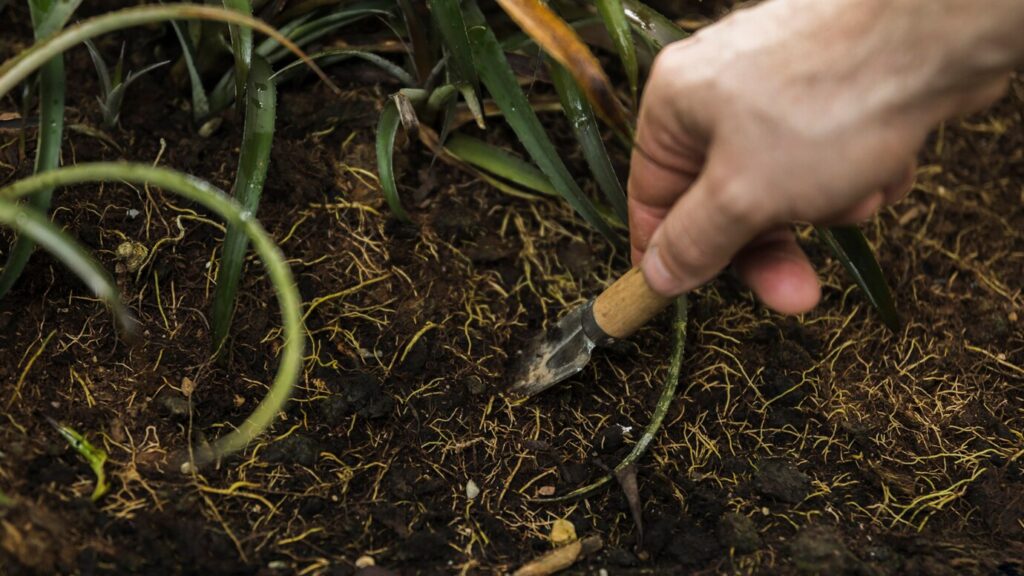Turmeric cultivation is more than just growing a spice; it’s a practice deeply rooted in culinary and medicinal traditions worldwide. Known for its vibrant color and unique taste, turmeric plays a crucial role in global cuisine. Beyond its culinary uses, turmeric is prized for its health benefits, especially curcumin, which has anti-inflammatory and antioxidant properties. This blog will provide essential tips for successfully growing turmeric, from choosing the right variety and preparing the soil to managing pests and diseases, ensuring a successful harvest of this versatile herbs
Tips for Successful Turmeric Cultivation
Selecting the Right Variety
Selecting the right variety of turmeric is crucial for successful cultivation, as different varieties thrive under varying climates and soil conditions. The choice depends on factors such as rainfall patterns, temperature range, and soil type prevalent in your region.
Varieties like Alleppey Finger, known for its high curcumin content and bright color, Rajapuri preferred for its robust growth and disease resistance, and Salem, valued for its adaptability to different climates and high yields, are popular choices among turmeric growers.
Understanding these characteristics helps farmers make informed decisions to optimize their turmeric cultivation efforts and ensure a productive harvest.
Preparing the Soil

Turmeric thrives best in soil that is well-drained and loamy. This type of soil structure allows for proper root development and prevents waterlogging, which can be detrimental to turmeric plants.
Steps for Soil Preparation:
Land Clearing: Clearing the land involves removing any existing vegetation or debris that may hinder turmeric growth. This step creates a clean slate for planting.
Plowing: Plowing helps loosen the soil and break up any compacted areas, promoting better root penetration and water absorption.
Adding Organic Matter: Incorporating organic matter, such as compost, enriches the soil with essential nutrients and improves its structure. This amendment enhances soil fertility, supporting healthy turmeric growth throughout the cultivation cycle.
Planting Turmeric Rhizomes
Ideal Time for Planting Turmeric Rhizomes:
Turmeric rhizomes are typically planted at the beginning of the growing season when the weather is warm and there is no risk of frost. In tropical and subtropical regions, this usually falls in late winter to early spring. Planting during this time allows the rhizomes to establish and grow vigorously during the warmer months.
Depth and Spacing Guidelines for Planting Rhizomes:
Turmeric rhizomes should be planted in well-drained soil at a depth of about 2 to 3 inches (5 to 7.5 cm). The spacing between each rhizome is crucial to allow sufficient room for growth and proper development of the plant. Typically, rhizomes are spaced about 7 to 10 inches (18 to 25 cm) apart in rows that are 1.5 to 2 feet (45 to 60 cm) apart. This spacing ensures adequate airflow and sunlight exposure for each plant.
Tips for Selecting Healthy Rhizomes for Planting:
Choosing healthy turmeric rhizomes is essential for successful cultivation. Look for firm and plump rhizomes with no signs of mold, soft spots, or damage. Healthy rhizomes should have multiple buds or “eyes,” which are small growth points from where shoots will emerge. Avoid rhizomes that are shriveled or have started sprouting prematurely. Opt for fresh, organically grown rhizomes whenever possible to ensure robust growth and disease resistance in your turmeric plants.
Watering and Irrigation
Watering and irrigation are critical aspects of turmeric cultivation to maintain optimal growth and yield. Turmeric plants require consistent moisture throughout their growth stages to thrive. During different growth phases, such as planting, rhizome development, and foliage growth, a well-planned watering schedule ensures that the plants receive adequate hydration without being waterlogged.
Effective irrigation methods like drip irrigation or sprinklers are commonly used to deliver water directly to the root zone, minimizing water waste and ensuring efficient nutrient absorption. Proper irrigation management plays a key role in promoting healthy turmeric plants and maximizing crop productivity.
Fertilization
To successfully cultivate turmeric, it’s essential to understand its nutrient needs and the best fertilization practices. Turmeric plants require specific nutrients like nitrogen, phosphorus, and potassium for healthy growth and optimal yield. Organic fertilizers, such as compost and well-decomposed manure, are highly suitable for turmeric cultivation as they provide a balanced supply of nutrients without harmful chemicals. It’s crucial to apply fertilizers at the right frequencies and use appropriate methods, such as side-dressing or incorporating them into the soil before planting.. Proper fertilization not only promotes robust plant growth but also enhances the quality of turmeric rhizomes, making them more flavorful and nutritious.
Managing Pests and Diseases
Managing Pests and Diseases in Turmeric Cultivation
Turmeric cultivation requires effective management of pests and diseases to ensure robust plant growth and optimal yields. Turmeric plants are vulnerable to various pests and diseases, including rhizome rot, leaf spot, and nematodes, which can severely impact crop health and productivity.
Integrated Pest Management (IPM) Strategies
Integrated pest management (IPM) strategies are essential in turmeric cultivation to minimize the risks posed by pests and diseases. IPM integrates cultural, biological, and chemical control methods to maintain pest populations below damaging levels while reducing reliance on synthetic pesticides. This approach emphasizes the use of natural enemies, cultural practices like crop rotation, and targeted applications of eco-friendly pesticides.
Organic Methods for Pest and Disease Control
Organic methods play a pivotal role in sustainable turmeric farming by focusing on natural remedies and preventive measures. These methods include using beneficial insects to control pests, implementing crop rotation to disrupt pest life cycles, and applying organic pesticides derived from natural sources like plants and minerals. By adopting organic practices, growers can maintain soil health, minimize environmental impact, and ensure the safety of turmeric products for consumers.
Growth and Development
In the growth and development stage of turmeric plants, it’s essential to understand the different growth stages they go through, from sprouting to maturity. Monitoring plant health and growth indicators such as leaf color, size, and overall vigor helps ensure they are thriving. Pruning and canopy management techniques are crucial for maintaining optimal plant health and maximizing yield. These practices involve removing dead or diseased parts of the plant, managing the canopy to allow for adequate sunlight and airflow, and promoting robust growth throughout the cultivation cycle. Proper management during this phase is key to achieving a healthy and productive turmeric crop.
Harvesting and Post-Harvest Handling

Harvesting turmeric is a crucial step in its cultivation. Knowing when to harvest involves looking for signs like yellowing leaves, indicating mature rhizomes. Careful digging ensures the rhizomes are retrieved intact. Post-harvest, removing soil and drying the rhizomes properly preserves their quality, enhancing flavor and ensuring they store well for later use or processing.
Storage and Marketing
Proper storage conditions are essential for maintaining the quality and shelf life of turmeric rhizomes. They should be kept in a cool, dry place, away from direct sunlight, to prevent mold and deterioration. When it comes to packaging, using airtight containers or vacuum-sealed bags can help preserve freshness and prevent moisture exposure. Marketing turmeric involves highlighting its culinary and medicinal benefits, targeting both local and international markets. Additionally, creating value-added products like turmeric powder, extracts, and supplements can enhance profitability and appeal to a broader customer base.
Conclusion
In conclusion, successfully cultivating turmeric involves following key tips such as selecting the right variety, preparing well-drained soil, ensuring proper irrigation, managing pests and diseases, and employing effective harvesting techniques. Continuous learning and adaptation are crucial in agriculture to keep up with evolving best practices and environmental changes. Aspiring turmeric farmers are encouraged to start their cultivation journey with these foundational guidelines, embracing both the challenges and rewards of growing this valuable spice and medicinal herb.



